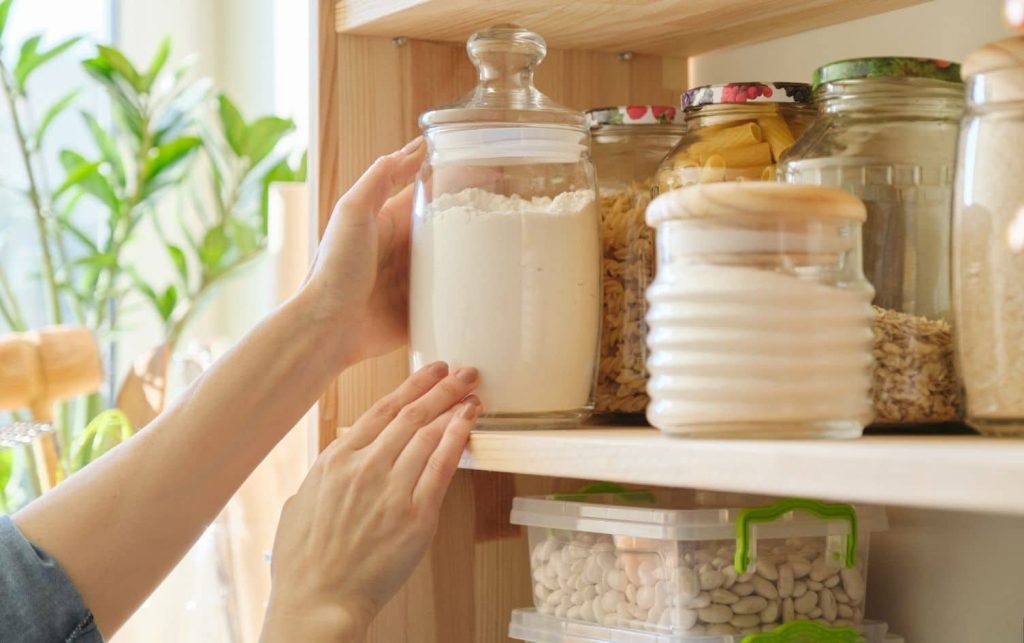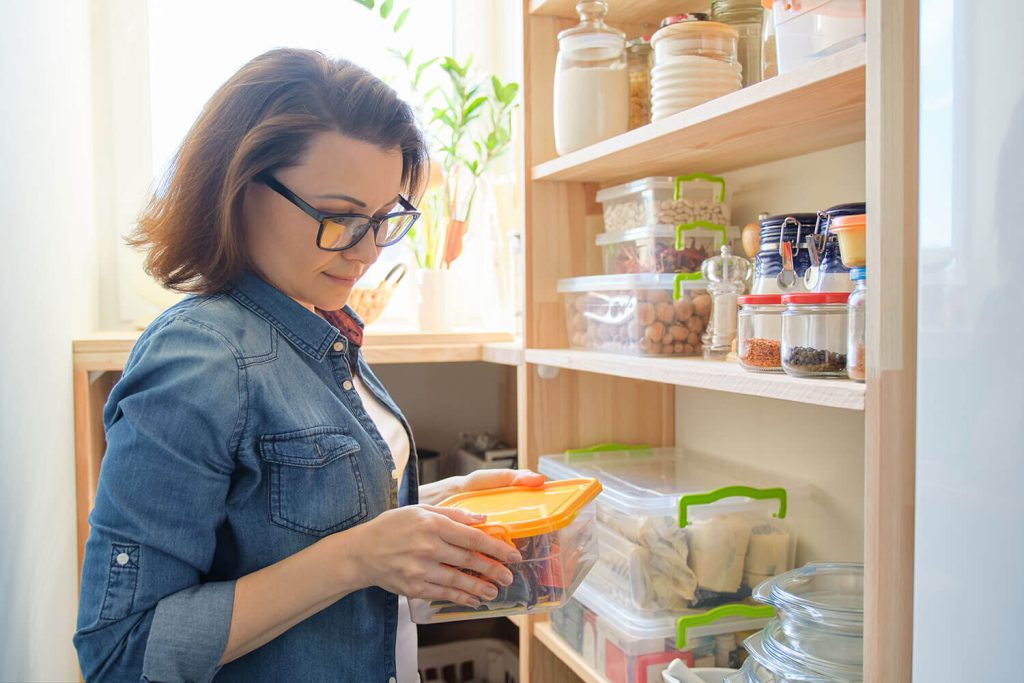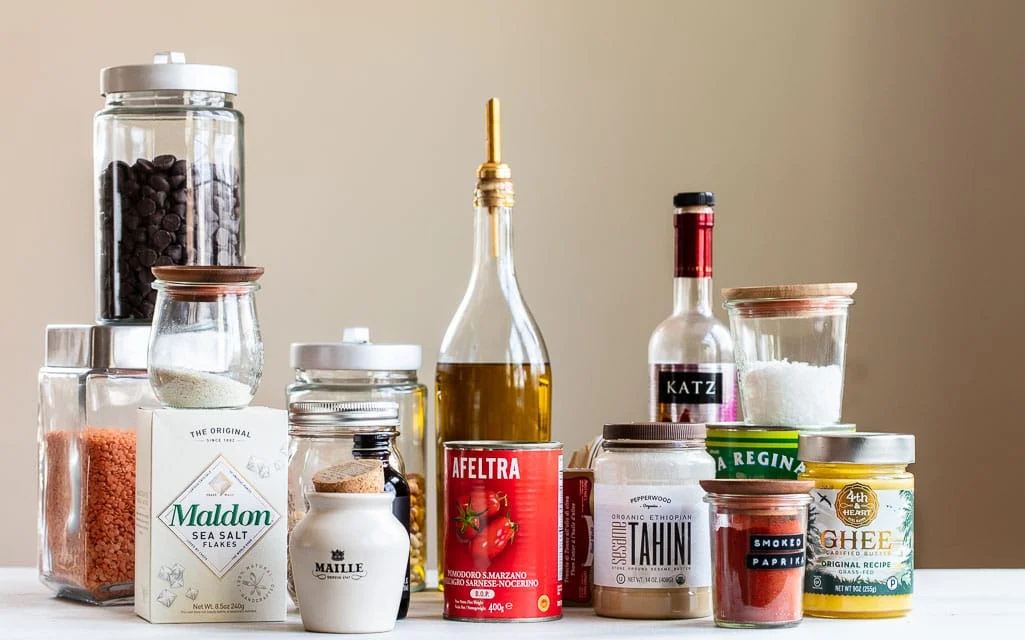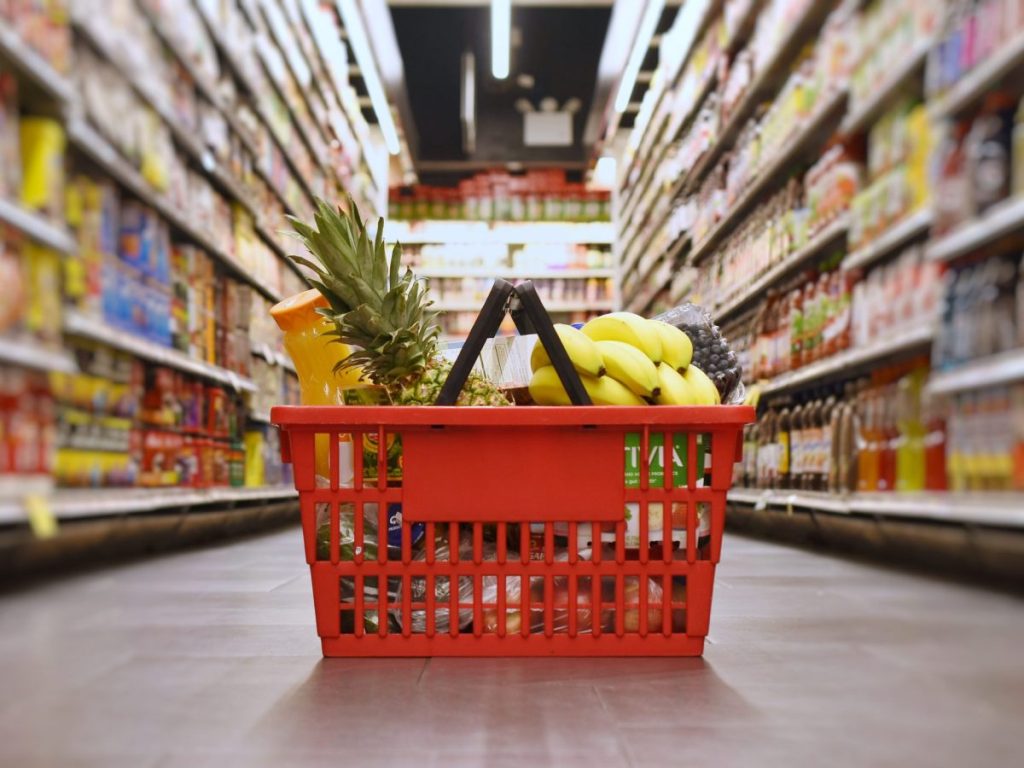If you have looked at your overflowing pantry and decided “enough is enough,” then we would love to introduce you to the concept of a minimalist pantry. Minimalism looks different for everyone, but at its heart, minimalism is focused on only buying what you need and eliminating what you do not (and yes, that means getting rid of those 20 bottles of flavored vinegars). Here are nine tips to help you get started with a minimalist pantry:
1. Sort through your existing pantry staples

Source: myfitnesspal.com
Before you can have a minimalist pantry, you need to sort through your current maximalist mess. Go through every single item and discard anything that is expired or is otherwise unusable. Once you are down to the still-edible items, make two piles: one to keep at home and the other to donate to a food bank or other charitable organization. After you are done sorting, go ahead and clear out the donation pile so that you know how much food you need to fit back into the pantry.
2. Decide how to organize your pantry
Organizing your pantry is a personal decision that will vary according to your personal needs as well as your family’s. For instance, if you have small kids at home, then you will probably want to put a bin of snacks on the lowest shelf so they can reach it. If you bake a lot, you will need to dedicate more shelf space for baking supplies than someone who only makes frozen cookies once a year. As a general rule of thumb, put the items that you use the most on the front of the shelves at eye level. Items that you use less often can go to the back of the shelves or on very low or high shelves.
3. Get clear, sealed containers

Source: citrussleep.com
Being able to see all of your pantry staples at a glance is one of the great benefits of a minimalist kitchen. To further increase visibility, we recommend putting all your pantry items in clear, airtight containers so that you can see what they are. If you have lots of items that look visually similar — cherries and cranberries, as an example — then you can bust out the label maker and use that to label the containers so there is no confusion.
4. Designate a shelf for overflow
The amount of stuff that you have in your pantry is naturally going to fluctuate over time, and sometimes you will have too much stuff to fit exactly in your perfect pantry layout. This is why we recommend deliberately designating a shelf or bin for overflow ingredients on those occasions when you need to buy more than usual. This will help keep your pantry organized and stop the clutter before it happens.
5. Focus on the most versatile ingredients

Source: familystylefood.com
When deciding what items you are planning to stock in your minimalist pantry, we recommend focusing on the most versatile ingredients. For instance, extra virgin olive oil can be used for almost any recipe, while specialty oils like peanut oil or avocado oil are not as versatile. Try to limit your purchase of items that you know you will only use rarely and instead prioritize pantry staples that you will get the most use out of.
6. Only buy what you know you like
How many times have you bought a new item to try, only to leave it sitting in the back of your pantry for three years until it expires? When stocking your minimalist pantry, only buy what you know you like and limit your purchases of extraneous items as much as possible. Pick your favorite flavored vinegars and do not rebuy the others once you use them up. Choose between raw honey and agave nectar instead of stocking both sweeteners. If you do buy something new to try, commit to using it up completely. This will help to keep your pantry under control and also cut down on food waste.
7. Switch to ‘just in time’ shopping

Source: cookist.com
If you live close to a grocery store, then we recommend shopping for ingredients as you need them instead of stocking up weeks (or months) in advance. This is especially crucial for fresh items like produce, dairy and meat, which will go off quickly if you do not use them shortly after buying. However, it is also a good practice to use for other staples to keep your minimalist pantry from becoming a mess once again. Doing more frequent yet smaller grocery runs will keep both your pantry and fridge from getting over-full.
8. Consider purchasing in bulk
That being said, it can make economical sense to buy certain shelf-stable items in bulk. This strategy is best used for dry ingredients that a) you know you will eat a lot of and b) that will keep in the pantry for a long time. Oatmeal, rice, quinoa and cereal are just some examples of items that you might want to consider buying in bulk. Storing them in those airtight containers we talked about earlier will help them stay fresh for longer and justify buying them in bulk.
9. Keep track of your purchases

Source: cozzo.app
Everyone has different tastes and preferences, and it will take some trial and error to determine the best setup for your personal pantry. To that end, consider keeping a log of what ingredients you have bought, which ones you loved and which ones you did not. This will help you remember to rebuy favorite items and to avoid the foods that you already tried and did not love. While it takes some extra effort, keeping brief notes will help you maintain a minimalist pantry and keep your food waste low.
Have you switched over to a minimalist pantry already? Are you thinking about taking a more minimalist approach to your kitchen, but have not made the leap yet? Let us know in the comments below what your experience with minimalism in the kitchen is!





